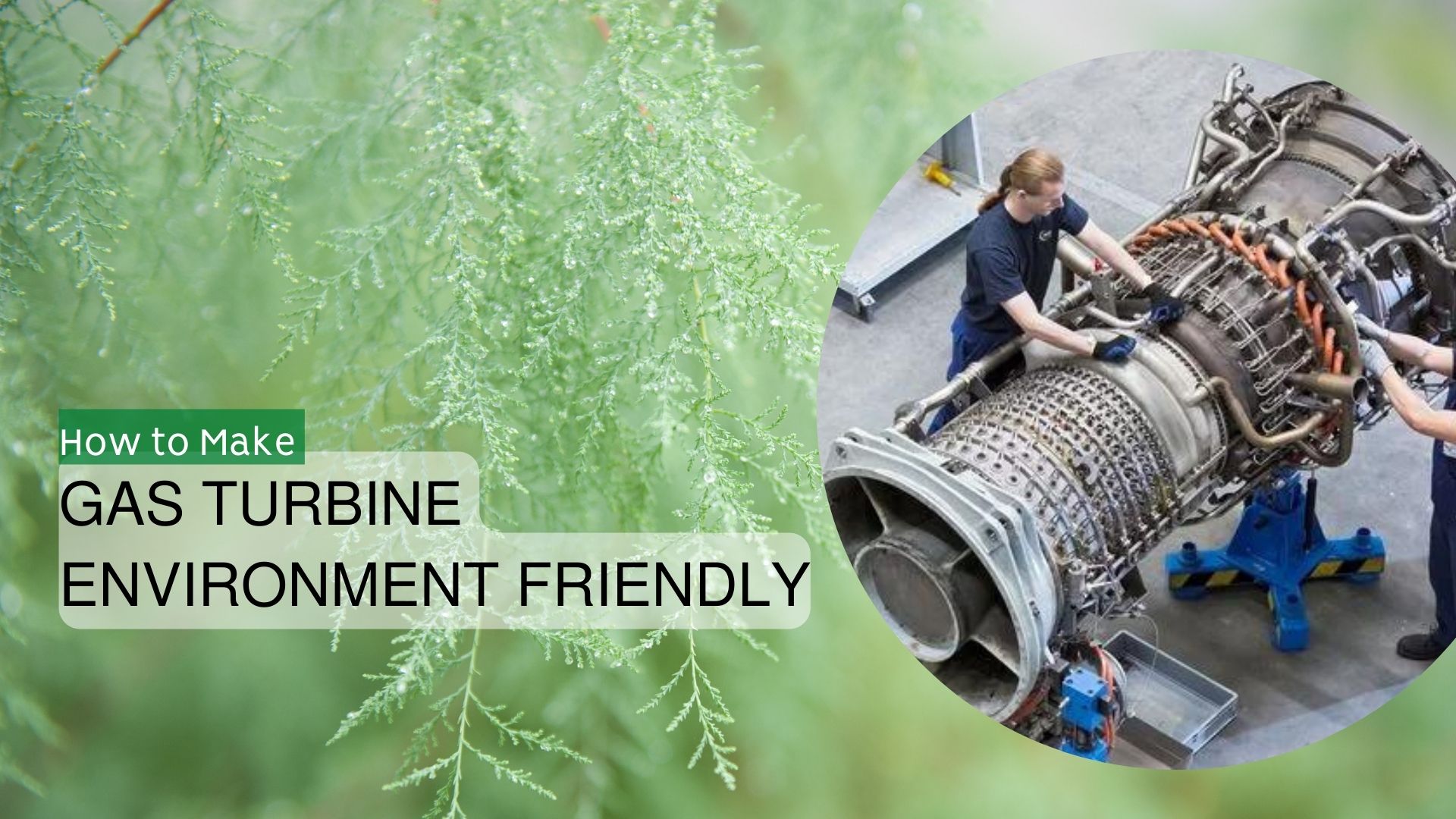When it comes to environmentally sustainable power options, gas turbines aren’t everyone’s first choice. They are typically powered by fossil fuels and emit significant amounts of greenhouse emissions. However, we must accept that gas turbines are currently used in a number of settings. This will not change quickly, therefore we must do everything we can to lessen their environmental impact as much as possible.
Fortunately, there are easy actions you can take to improve the efficiency of your gas turbine compressor while minimizing the amount of fossil fuel required and the pollutants emitted. That’s good news not only for the environment but also for your bottom line.
What are the environmental consequences of gas turbines?
When fossil fuels are burned, they emit greenhouse gases such as CO2.
These gases trap heat in the Earth’s atmosphere, leading to global warming and climate change. Gas turbines, by definition, burn gas to generate energy, resulting in the unavoidable release of greenhouse gases.
The worldwide society is becoming increasingly conscious of our collective role in global warming. It is becoming increasingly necessary to do all possible to reduce our greenhouse gas emissions.
Emissions Signatures
Gas turbine systems feature some of the lowest emissions and best efficiency of any combustion source. Despite this, the number of gas turbine emissions standards is increasing.
NOX has been the principal target pollutant from gas turbines for the last 30 years. Significant research and development efforts resulted in lean premix combustion systems. Over the last 15 years or more, technological developments have resulted in a 70% to 95% reduction in NOX emissions from natural gas-fired gas turbines. Over the next decade, it will be vital to adopt effective policies and regulations that do not penalize the existing low-emitting and efficient gas turbine.
Gas turbines emit some of the fewest NOX emissions of any prime mover. NOX emissions from a new gas turbine installation are typically ten times lower than those from a typical US coal plant. NOX emissions from natural gas-fired gas turbines range from 5 to 250 parts per million (ppm). Lower NOX emissions can be accomplished by the use of add-on control systems such as selective catalytic reduction (SCR). Some of the less common alternative fuels are expected to emit more pollution.
NOX emissions are adjusted in relation to what pure methane would yield (pipeline natural gas is the baseline). The basic assumption is that the combustor design remains constant across fuel kinds. Lower Wobbe index fuels with fewer stoichiometric flame temperatures provide lower NOX emissions than fuels with higher hydrogen and carbon monoxide concentrations and higher stoichiometric flame temperatures.
Greener is cleaner
Some businesses are simply dependent on gas turbine technology or cannot afford to change, but this is no justification for doing nothing to reduce emissions. Although there is no such thing as an environmentally benign gas turbine, even older model compressors can be upgraded in terms of efficiency and greenhouse gas emissions.
A regular cleaning plan will eliminate and prevent the accumulation of pollutants on the inner surfaces of the turbine’s compressor. This, in turn, keeps the aerodynamic flow going and allows for more complete fuel combustion. Cleaning will allow you to:
- Improve efficiency
- Consume less fuel
- Produce fewer hazardous emissions
- Save money
Carbon emissions reduction
The following data was collected from a General Electric frame gas turbine operating at an offshore facility to demonstrate the type of fuel and CO2 savings that can be realized by cleaning.
Data collected before and after the wash shows a post-wash fuel savings of 65 m3/hr with a load increase of 300 kW.
In terms of greenhouse gas emissions, depending on an annual working period of 358 hours, frequent compressor washing has the potential to save 1394 tonnes of CO2 per year.
Profitability and the environment
In reality, our customers have always been more concerned with saving money and increasing efficiency than with lowering their greenhouse gas emissions. When it comes to the latter, though, the sector is growing more self-conscious, and public opinion is demanding change.
Expectations are rising as targets are set.
The good news is that with the appropriate technology and solutions, you can help reduce harmful emissions while simultaneously saving money for your company. A cleaner gas turbine compressor is more dependable, efficient, and environmentally friendly than the alternative, which is wonderful news for everyone.
Also Read: How to gain real followers on Instagram
Summary
We are currently shifting from fossil fuels to a better future, but there is still a long way to go until renewable energies take over. Right now, there is a smooth transition taking place, so we will need to focus our efforts on making power generation as green as possible, such as discovering ways to reduce gas turbine pollution.
One opportunity area for this transition is to implement technologies that aid in mitigating turbine power losses and assisting them in producing energy at their optimal operative conditions (100 percent). Power loss in gas turbines is caused by factors as simple as environmental factors (humidity and high ambient temperatures) and power plant geolocation (height above sea level).
These, combined with other factors such as polluted air from dust or other heavy particles necessitating a higher level of filtration and thus a pressure loss on the turbine air inlet, cause the nominal power of the turbine to be significantly reduced, operating at 70-85 percent of its nominal capacity.
With the assistance of a turbine control system, the gas turbine control system can improve safety and security, thus increasing efficiency. IS200VRTDH1D is an example of GE Turbine control system spare part.

